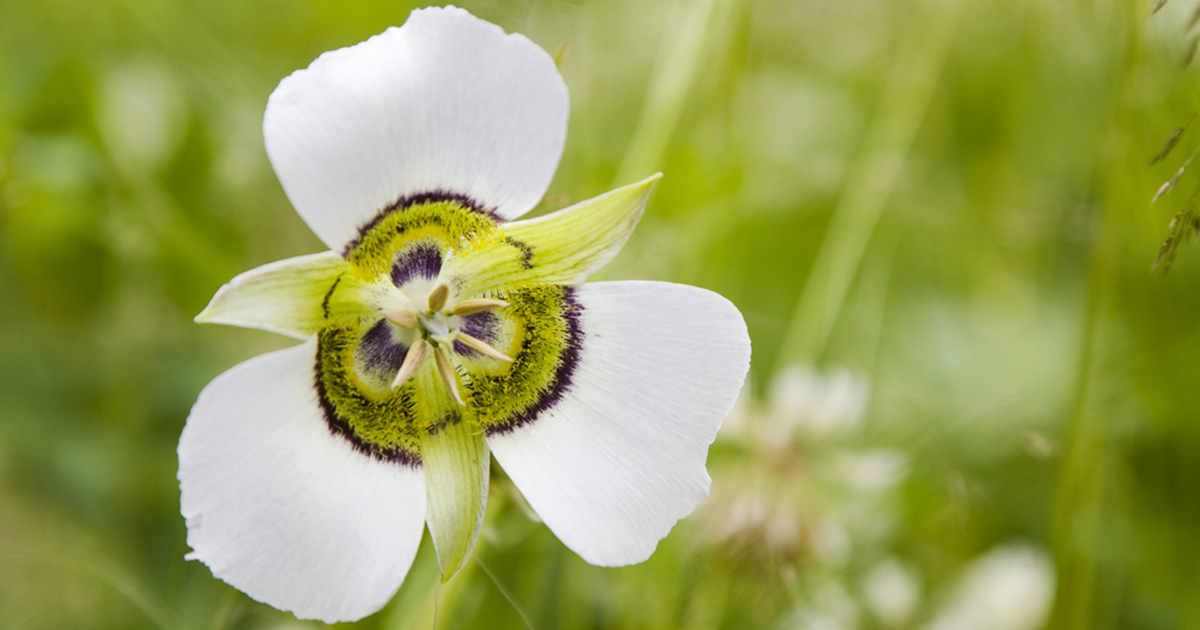
Mariposa Lily, also known as Calochortus or “butterfly lily,” is an enchanting flowering plant that is native to the western parts of North America. This delicate and graceful lily gets its name from its resemblance to the wings of a butterfly when in full bloom. Known for its vibrant colors and unique petals, the Mariposa Lily has captivated botanists and nature enthusiasts alike for centuries.
In this article, we will explore 17 enigmatic facts about the Mariposa Lily that will further deepen your appreciation for this exquisite plant. From its diverse species to its ecological importance, there’s so much more to discover about this fascinating lily.
Key Takeaways:
- The Mariposa Lily is a stunning flower native to North America, symbolizing love and beauty. Its vibrant colors, unique petal markings, and resilience in harsh environments make it a captivating and enchanting bloom.
- The Mariposa Lily has medicinal uses, is drought-tolerant, and symbolizes renewal and transformation. Its ability to attract pollinators, adapt to different weather conditions, and serve as a perennial flower makes it a fascinating and valuable addition to nature.
The Mariposa Lily is a Symbol of Love and Beauty.
The Mariposa Lily, also known as Calochortus, is a stunning flower that is often associated with love, beauty, and admiration. Its delicate petals and vibrant colors make it a favorite amongst gardeners and flower enthusiasts.
Mariposa Lily is Native to North America.
The Mariposa Lily is native to North America and can be found in various regions including California, Oregon, Nevada, and parts of Mexico. It thrives in meadows, grasslands, and open woodlands.
The Name “Mariposa” Means Butterfly in Spanish.
The name “Mariposa” is derived from the Spanish word for butterfly. This is due to the flower’s resemblance to a butterfly with its intricate and colorful petals.
Mariposa Lily Comes in Different Colors.
The Mariposa Lily comes in a variety of colors such as white, pink, yellow, and purple. Each color symbolizes different meanings, including purity, happiness, and royalty.
It Has Distinctive Petal Markings.
One of the distinctive features of the Mariposa Lily is its petal markings. Some species have unique patterns like dark spots or brushstrokes on their petals, making them even more fascinating.
Mariposa Lily Attracts Pollinators.
The Mariposa Lily has evolved to attract pollinators such as bees and butterflies. Its vibrant colors and sweet fragrance act as a lure, ensuring the continuation of its species through pollination.
It Can Survive in Harsh Environments.
The Mariposa Lily has adapted to survive in various environmental conditions, including dry and rocky areas. Its deep root system allows it to draw moisture and nutrients from the soil, enabling it to thrive even in challenging landscapes.
Mariposa Lily Blooms in Spring and Summer.
The Mariposa Lily typically blooms in the spring or summer months, with each flower lasting for several weeks. This period of blooming adds a vibrant touch to the natural landscape.
Some Mariposa Lily Species Are Protected.
Due to habitat loss and overcollection, some species of Mariposa Lily are protected and considered endangered. Conservation efforts are vital to preserve these beautiful flowers for future generations to enjoy.
Mariposa Lily has Medicinal Uses.
Native American tribes have utilized the Mariposa Lily for its medicinal properties. It has been used to treat various ailments, including respiratory issues and digestive problems.
The Mariposa Lily is a Hardy Plant.
The Mariposa Lily is known for its hardiness and ability to withstand different weather conditions. It can tolerate both heat and cold, making it a resilient plant.
Mariposa Lily Bulbs Were Consumed as Food.
Historically, Native American tribes consumed Mariposa Lily bulbs as a food source. The bulbs were often roasted or cooked and were considered a nutritious part of their diet.
Mariposa Lily Is a Favorite Amongst Gardeners.
Gardeners are enamored by the beauty of the Mariposa Lily and often include it in their flowerbeds and garden landscapes. Its unique appearance and symbolic value make it a popular choice.
The Mariposa Lily Is a Perennial Flower.
The Mariposa Lily is a perennial flower, meaning it lives for more than two years. It regrows and blooms each year, adding a touch of elegance and color to the surroundings.
Mariposa Lily is Drought-Tolerant.
The Mariposa Lily has adapted to survive in arid conditions and is known for its drought tolerance. Its ability to conserve water makes it a suitable choice for xeriscaping gardens.
Mariposa Lilies Have a Unique Pollination Strategy.
Some species of Mariposa Lily have evolved a unique pollination strategy. Instead of relying on insects for pollination, they self-pollinate or are wind-pollinated, ensuring their reproductive success.
Mariposa Lily Symbolizes Renewal and Transformation.
In various cultures, the Mariposa Lily represents renewal and transformation. Its life cycle, from bulb to stunning bloom, is seen as a symbol of growth, change, and the beauty of nature.
Conclusion
Mariposa Lily, with its stunning beauty and intriguing characteristics, is truly a remarkable plant. From its unique adaptations to its rich cultural significance, there are countless reasons to appreciate and learn more about this enchanting flower.
As we explored the 17 enigmatic facts about Mariposa Lily, we discovered its diverse range of colors, its exclusive reliance on nocturnal pollinators, and its ability to thrive in various climates. We also explored its cultural importance to Native American tribes and its potential medicinal properties.
Whether you are a nature enthusiast, a botany lover, or simply intrigued by the wonders of the natural world, Mariposa Lily offers an endless source of fascination. So next time you encounter this graceful flower, take a moment to appreciate its beauty and the mysteries it holds.
FAQs
1. What is the scientific name of Mariposa Lily?
The scientific name of Mariposa Lily is Calochortus.
2. Where can Mariposa Lily be found?
Mariposa Lily can be found in various regions of North America, including California, Nevada, and Oregon.
3. What colors do Mariposa Lilies come in?
Mariposa Lilies come in a range of colors, including white, yellow, pink, and purple.
4. How do Mariposa Lilies attract pollinators?
Mariposa Lilies attract pollinators, especially moths, by releasing a pleasant fragrance at night.
5. Are Mariposa Lilies endangered?
Some species of Mariposa Lilies are considered endangered due to habitat loss and over-harvesting.
6. Can Mariposa Lilies be grown in home gardens?
Yes, Mariposa Lilies can be grown in home gardens, provided they are given the right conditions, including well-drained soil and adequate sunlight.
7. Can Mariposa Lilies be used for medicinal purposes?
Mariposa Lilies have been used by Native American tribes for various medicinal purposes, including treating skin ailments and digestive issues.
The enchanting Mariposa Lily captivates with its enigmatic beauty and fascinating adaptations. As you've learned about this North American native's symbolism, colors, and resilience, your curiosity may be piqued to explore more intriguing facts about other stunning flowers. Delving into the world of Calochortus, a genus that includes Mariposa Lilies, promises to uncover even more botanical wonders and surprises. Embark on a journey of discovery and let your fascination with the natural world bloom as you unearth the secrets of these captivating flowers.
Was this page helpful?
Our commitment to delivering trustworthy and engaging content is at the heart of what we do. Each fact on our site is contributed by real users like you, bringing a wealth of diverse insights and information. To ensure the highest standards of accuracy and reliability, our dedicated editors meticulously review each submission. This process guarantees that the facts we share are not only fascinating but also credible. Trust in our commitment to quality and authenticity as you explore and learn with us.


